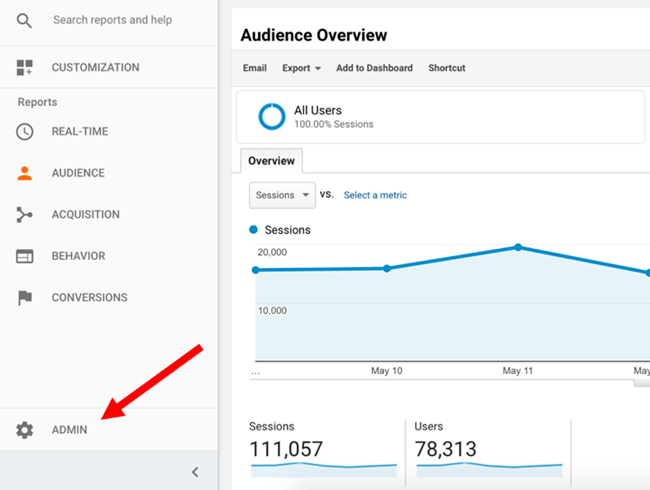Harnessing Remarketing in Google Analytics: A Comprehensive Guide
Using remarketing in Google Analytics offers businesses a critical side in reaching out to possible customers. This overview will certainly drop light on the vital steps entailed in harnessing the complete possibility of remarketing in Google Analytics, leading to boosted advertising end results.
Comprehending Remarketing in Google Analytics
Remarketing in Google Analytics allows services to strategically target users that have previously interacted with their internet site or mobile application. By leveraging data from Google Analytics, organizations can produce customized remarketing checklists based upon user actions, such as pages gone to, activities taken, or certain goals attained. This powerful device enables companies to re-engage with individuals that have actually revealed passion in their services or products, eventually enhancing the likelihood of conversion.
Comprehending the various sorts of remarketing approaches is important for a successful campaign - What Is “Remarketing” In Google Analytics?. Google Analytics uses various choices, consisting of typical remarketing, dynamic remarketing, and remarketing listings for search ads (RLSA) Each kind offers a distinct purpose and can be tailored to meet specific advertising and marketing objectives
Moreover, analyzing the performance of remarketing campaigns is vital for optimizing outcomes. Google Analytics provides important insights into the effectiveness of various remarketing strategies, allowing companies to make data-driven choices and fine-tune their targeting strategy. By continually changing and keeping track of remarketing efforts based upon analytics data, organizations can make the most of ROI and drive success in their advertising and marketing initiatives.
Establishing Remarketing Campaigns

After establishing up target market listings, the next action is to connect Google Analytics with Google Advertisements. By connecting these two platforms, businesses can seamlessly transfer audience checklists from Google Analytics to Google Ads for remarketing objectives. This assimilation enables for more specific targeting and far better campaign efficiency.
When the accounts are linked, companies can produce remarketing campaigns in Google Advertisements making use of the target market lists formerly specified in Google Analytics. These projects can be personalized with particular advertisement creatives, messaging, and bidding process approaches to successfully re-engage with past visitors and drive conversions. By adhering to these actions, services can leverage the power of remarketing to improve their advertising and marketing efforts and raise ROI.
Using Target Market Division Techniques

Predefined sectors in Google Analytics allow you to swiftly analyze typical audience categories like brand-new users, returning customers, or users that finished a specific goal on your web site. Personalized segments, on the various other hand, enable you to develop special sectors based upon certain requirements that are essential to your company objectives. Dynamic remarketing lists instantly adjust based on user behavior, showing individualized advertisements to users who have actually connected with your website particularly ways.
Analyzing Remarketing Efficiency Metrics
Upon evaluating the performance of remarketing campaigns in Google Analytics, the analysis of key efficiency metrics gives valuable understandings into audience interaction and conversion prices. By diving into metrics such as click-through prices (CTR), conversion prices, price per acquisition (CERTIFIED my latest blog post PUBLIC ACCOUNTANT), and return on ad spend (ROAS), marketing experts can assess the success of their remarketing efforts. Assessing these metrics allows online marketers to maximize campaigns, fine-tune target market targeting, and allocate budget plans efficiently to improve total remarketing performance.
Maximizing Remarketing Strategies
When refining remarketing techniques in Google Analytics, concentrating on audience segmentation is critical for achieving project success. By splitting your audience into certain sectors based upon their behavior, demographics, or rate of interests, you can customize your ads better to every team. This targeted strategy increases the likelihood of involving users that have already shown rate of interest in your solutions or products, bring about higher conversion rates.
Another important element of maximizing remarketing approaches is continually screening and refining your campaigns (What Is “Remarketing” In Google Analytics?). A/B testing different ad creatives, messaging, or deals can aid you recognize what reverberates ideal with your target market and drives one of the most conversions. By assessing the efficiency of these examinations in Google Analytics, you can make data-driven choices to enhance your remarketing efforts even more
Additionally, leveraging dynamic remarketing can significantly enhance your project results. This attribute permits you to show customized ads to customers based upon their previous interactions with your web site, showcasing services or items they have actually previously seen. By providing customized material to customers based upon their passions and habits, vibrant remarketing can aid raise engagement and drive conversions.
Verdict
Finally, harnessing remarketing in Google Analytics is a strategic approach to target users who have previously involved with a web site. By developing tailored target market listings and utilizing audience division techniques, organizations can enhance remarketing advocate raised conversion rates. Assessing performance metrics and continually enhancing strategies are critical for maximizing the performance of remarketing efforts.
Google Analytics supplies numerous alternatives, including typical remarketing, dynamic remarketing, and remarketing checklists for search ads (RLSA)After establishing up target market lists, the following step is to connect Google Analytics with Google Advertisements. By connecting these 2 systems, services can effortlessly move audience listings from Google see this website Analytics to Google Advertisements for remarketing functions.Once the accounts are linked, companies can develop remarketing campaigns in Google Advertisements using the target market notes previously defined in Google Analytics.When refining remarketing strategies in Google Analytics, focusing on target market division is paramount for achieving campaign success.
Comments on “A Complete Guide to "Remarketing" In Google Analytics”